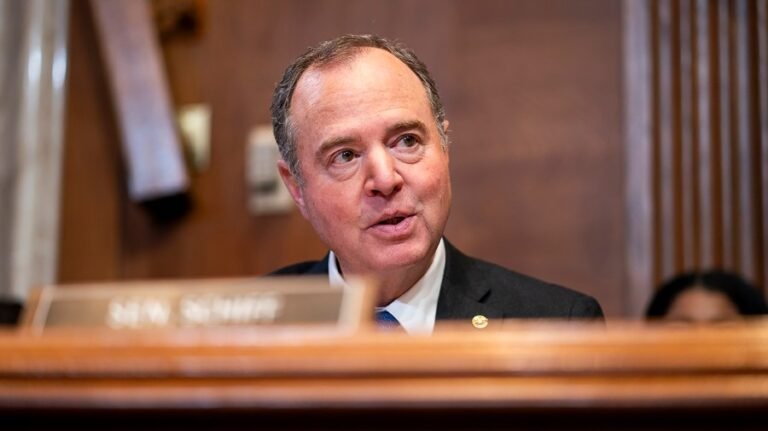
A key stock market index reached a record high Friday, capping off a comeback from the selloff driven by President Trump’s tariffs this spring.
The S&P 500 index was up 0.5 percent Friday morning, rising roughly 32.6 points and exceeding the all-time high of 6,147 points set in February. The Nasdaq composite was up 0.3 percent and the Dow Jones Industrial Average was up 0.4 percent.
After falling sharply in March and April as Trump rolled out his trade agenda, stocks have rallied back to their previous highs after the president dramatically reduced the scale and scope of his import taxes.
Trump shook markets in April by announcing he would impose roughly $600 billion in tariffs on nearly every U.S. trading partners. His new “Liberation Day” tariffs followed import taxes he levied on Canada, Mexico and China earlier in his term, along with additional taxes on foreign metals, autos and auto parts.
Despite initially brushing off the market’s reaction, Trump adjusted his trade agenda two weeks later by reducing and delaying his April tariffs on all other countries, but ramping them up to levels as high as 145 percent on China.
The U.S. and China have since struck several smaller agreements to reduce tariffs on each other’s goods and open up Chinese exports of rare metals to the states.
The Chinese Ministry of Commerce confirmed further details of the deal on Friday, which includes
“China will, in accordance with the law, review and approve eligible export applications for controlled items. In turn, the United States will lift a series of restrictive measures it had imposed on China,” a Ministry spokesperson said in a statement, which did not go into detail.
Estimates for the current overall U.S. tariff rate range between 10 and 15 percent now, down from 25 percent when China and the U.S. had triple-digit tariffs in place on each other. The Yale Budget Lab puts the overall number at 15.8 percent now.
Major new tariffs include a 10-percent general tariff, 30-percent tariffs on China, 25-percent tariffs on autos and auto parts, 25-percent tariffs on steel and aluminum, and 25-percent tariffs on select goods from Canada and Mexico.
The Congressional Budget Office estimated earlier in June that the new tariffs would reduce primary deficits by $2.5 trillion. Accounting for macroeconomic effects, the deficit reduction increases to $2.8 trillion.
Also potentially boosting optimism on Wall Street was the downward revision to first-quarter gross domestic product that came this week, which could potentially increase the chances of a rate cut from the Federal Reserve.
However, a hotter than expected inflation print on Friday likely works against that option. Inflation rose 2.3 percent in May on an annual basis, up from just 2.1 percent in April, the Commerce Department said Friday.
Removing the more volatile categories of food and energy, core prices increased 2.7 percent from a year earlier, a rise from 2.6 percent in April.
“Today’s report is not good for economic activity and inflation and will continue to keep the Federal Reserve on the sidelines for now,” Raymond James economist Eugenio Aleman said in a commentary.


